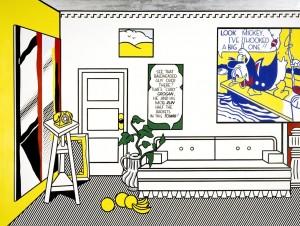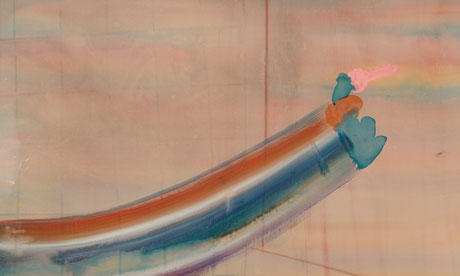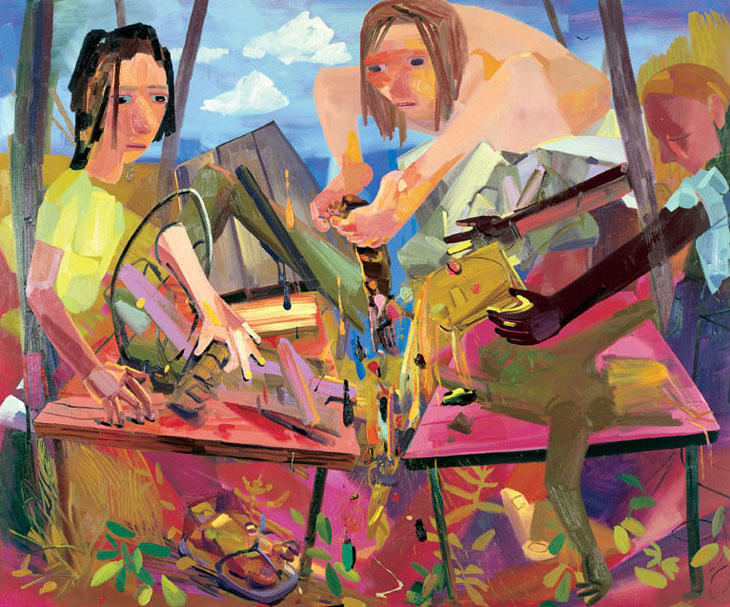Transformation
Creative artists manage to produce something new and appealing to their viewers. A good example is Roy Lichtenstein’s “Artist Studio No. 1”. This painting explains how the painter transformed different objects, paintings, and images into powerful works of art1. I now understand how the concept of transformation results in quality paintings. The artist also transformed earlier works by Monet and Matisse in order to produce new paintings2. Roy Lichtenstein embraced a new field of Pop Art. He reproduced the works of different artists. He also produced numerous sculptures and paintings. Roy also produced powerful comic works and paintings using oil paint. Roy’s philosophy was to produce precise and hard-edged compositions3.

The Roy Lichtenstein Exhibition (Pompidou Museum, Paris).
Phoebe Unwin has revolutionized the world of art by producing superior works of art. She uses thick pigments in order to achieve her goals. She has become a successful Spay Painter.

Exhibition: British Art Show 7 (2010, London)
She examines every event in order to produce the best works of art. This aspect informs my understanding of transformation. This approach makes it easier for her to show what painting can do4. She uses her experiences and memories in order to produce quality artworks. This approach makes it easier for artists to explore the overlap between abstraction and figuration5. Such practices describe the idea of transformation. A good example is her famous painting called “Dab Hand of 2010”.
In conclusion, the works of Roy Lichtenstein and Phoebe Unwin have guided me to understand the power of transformation. The works of these artists explain why transformation is a powerful concept in the world of art. This concept encourages artists and designers to come up with original works of art or reproductions6. I have understood why artists should focus on the best outcomes. This approach will make it easier for them to achieve their greatest potentials. I can now use the concept of transformation in order to produce powerful works of art.
Dana Schutz
According to Tom McGrath, “figure” is a critical aspect of a painting. It refers to every observable element in a piece of art. The term “field” focuses on everything else presented in a specific painting. This figure is also known as the “positive shape” in a painting. A painting will have one or more figures. A complex painting will have several things to observe. Dana Schutz is an American artist. She was born in 1976.
She currently produces powerful works of art based on meta-narratives7. Dana Schutz uses consistency and unity in her paintings. This approach produces a sense of compatibility. The field and figure are inseparable8. The two are presented effectively in Dana’s paintings. The relationship between these two aspects is something critical whenever producing different works of art.

Exhibition: Friedrich Petzel Gallery in New York (2007) (Oil on Canvas, 190.5 x 231 cm)
Most of her figures appear to float in pictorial genres9. Most of her landscapes can be described as constructions. That being the case, Dana Schutz activates several pictorial elements in most of her paintings. She achieves this goal using various aspects such as form, format, and ground10. She also juxtaposes her figures in order to produce the best paintings. The artist uses the concept of 3 dimensions (3D) in order to create the best pictorial space. Schutz uses powerful aspects such as color, texture, and surface. These strategies make it easier for the artist to depict the best pictorial elements.
Bibliography
Kalina, Richard. Imaging the Present: Context, Content, and the Role of the Critic. New York: Routledge, 2011.
Lanchner, Carolyn. Roy Lichtenstein. New York: Routledge, 2009.
McGrath, Tom. Dana Schutz: The Last Thing You See. New York: Oxford University Press, 2010.
Footnotes
- Richard Kalina, Imaging the Present: Context, Content, and the Role of the Critic (New York: Routledge, 2011), 45.
- Kalima, Imaging the Present, 58.
- Carolyn Lanchner, Roy Lichtenstein (New York: Routledge, 2009), 63.
- Richard Kalina, Imaging the Present: Context, Content, and the Role of the Critic (New York: Routledge, 2011), 45.
- Carolyn Lanchner, Roy Lichtenstein (New York: Routledge, 2009), 76.
- Richard Kalina, Imaging the Present: Context, Content, and the Role of the Critic (New York: Routledge, 2011), 45.
- Tom McGrath, Dana Schutz: The Last Thing You See (New York: Oxford University Press, 2010), 28.
- McGrath, Dana Schutz, 73.
- Tom McGrath, Dana Schutz: The Last Thing You See (New York: Oxford University Press, 2010), 93.
- McGrath, Dana Schutz, 103.